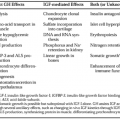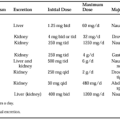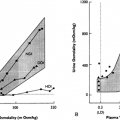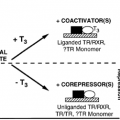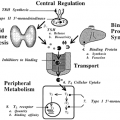ULTRADIAN RHYTHMS
Part of “CHAPTER 6 – ENDOCRINE RHYTHMS“
PERIOD RANGE AND ORIGIN
The term ultradian is primarily used to designate rhythmicities with periods ranging from fractions of hours to several hours. In the hourly range, the most prominent ultradian rhythms are the alteration of REM and non-REM stages in sleep and the pulsatility of hormonal secretions. Oscillations in the 80- to 120-minute range also occur at the rate of urine flow and gastric motility. Pulsatile hormonal release is ubiquitous in the endocrine system. Indeed, the plasma levels of most hormones undergo episodic fluctuations of variable duration and magnitude, referred to as secretory “episodes” or “pulses.” These pulses recur at 1- to 4-
hour intervals (see Fig. 6-2). Pulsatility has been observed for anterior and posterior pituitary hormones; for hormones directly under their control; and for other endocrine variables, such as insulin, glucagon, and renin. The long-disputed theory that ultradian variations of brain activity—similar to those occurring during sleep—were also present during wake (constituting a basic rest-activity cycle) has received some experimental support. One study demonstrated the existence of an ultradian rhythm of brain electrical activity in the frequency range of 13 to 35 Hz, an index of central alertness, during waking.22 Furthermore, it appeared that pulses of cortisol release were significantly associated with increases in this marker of alertness.
hour intervals (see Fig. 6-2). Pulsatility has been observed for anterior and posterior pituitary hormones; for hormones directly under their control; and for other endocrine variables, such as insulin, glucagon, and renin. The long-disputed theory that ultradian variations of brain activity—similar to those occurring during sleep—were also present during wake (constituting a basic rest-activity cycle) has received some experimental support. One study demonstrated the existence of an ultradian rhythm of brain electrical activity in the frequency range of 13 to 35 Hz, an index of central alertness, during waking.22 Furthermore, it appeared that pulses of cortisol release were significantly associated with increases in this marker of alertness.
Stay updated, free articles. Join our Telegram channel

Full access? Get Clinical Tree


